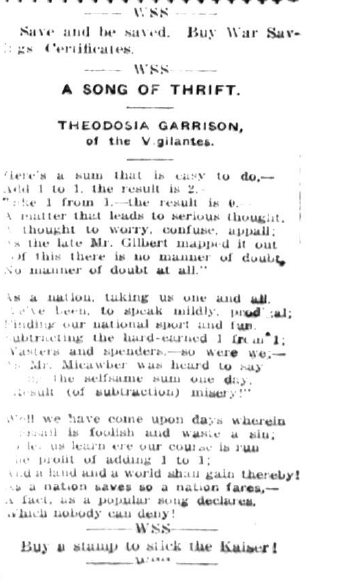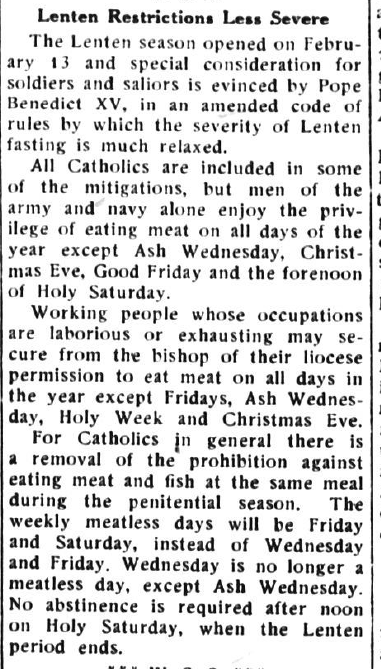Memory Monday: Current Flu Cases and Third Week of February 1918
by meep
Last week, I noted that people kept going on about the current flu season being the worst in a decade (while I’m doing eyebrow-a-la-The-Rock) though the season of 2014-2015 was pretty bad, and was a lot less than a decade ago.
The death rates aren’t worse than 2014-2015. Even the hospitalizations aren’t worse.
But I finally found the bit that is worse: outpatient treatments.
Here is the current snapshot:

Yup, that’s much worse than other seasons. While it hasn’t yet translated into mortality and hospitalizations worse than 2014-2015, it’s still pretty bad.
A few more flu-related items.
Why You Must Stay Home When You Have the Flu
It’s mid-February and the flu patients keep coming. Flu vaccine and screening supplies are becoming scarce at the Findlay, Ohio, medical practice where family nurse practitioner Gina Vaughn sees her patients. The influx continues as the infection spreads. “The flu season has just gotten out of control because people are not staying home,” she laments. “They’re not using common sense.”
Slogging through the flu is miserable enough. If you try to tough it out at the workplace or power through in public, you’re not doing yourself – or anyone else – a favor. To be a hero, stay home, say public health experts and patient care providers like Vaughn. By doing so, you help protect your co-workers, classmates, fellow worshipers, small children, pregnant women, seniors and those with chronic health conditions from exposure to the flu virus.
It’s important to get an early handle on the flu to stave off complications such as pneumonia or sinus infections, or in extreme cases, a life-threatening infection called sepsis. Reach out to your health care provider sooner rather than later.
That’s much more helpful than waiting until symptoms worsen and you’re forced to make a midnight trip to the nearest emergency room. “They don’t want you in the ER,” Vaughn says. “It’s too dangerous – you could spread germs all over.”
I’ve gone to work with a cold — no fever, no aches, just sneezing a lot. Usually, some OTC drug could dry up my runny nose while I work, but I also warn people off from getting too close.
But if I have a fever? Hell no.
Flu vaccine works better than feared, but it’s still not great
The flu vaccine is working better than doctors feared, but still is not especially effective, health officials said Thursday.
Overall, this year’s vaccine is 36 percent effective, meaning it reduces the number of doctor visits by 36 percent, the Centers for Disease Control and Prevention reports.
….
It’s only 25 percent effective against the most common strain circulating this year, the H3N2 strain, CDC’s Dr. Alicia Fry and colleagues found.But the good news is that it works better in kids. The vaccine provided 59 percent protection against H3N2 in children 8 and younger and did not appear to provide any protection at all for older children.
Note that the vaccine has differing effectiveness by age. It’s very important for kids to get vaccinated… and no, not necessarily because kids are particularly vulnerable to dying from flu. It’s because kids are little snot-monsters who don’t have the reflex of getting a hit of rubbing alcohol on their hands every time they see a container of hand sanitizer (and yes, I pretty much do this all the time now. I keep hand lotion at my desk to counteract any drying issues)
So yay that the vaccine is okay for kids — cutting down flu incidence in kids is very important in keeping it spreading to the more vulnerable elderly population.
BUY BONDS NOW
Okay, so again, back in the third week of February 1918, there’s very little talk of flu.
The main subject is war bonds and savings stamps. Here are a few clips from the 8-page newspaper.




Sorry about that last one — someone else did the scanning, and I bet the newspapers weren’t in good condition when they scanned them.
There was even more than those four items, but I think you get the idea. There are two different items for funding the war effort: Liberty Bonds and War Savings Stamps.
Something regarding the World War I Liberty Bonds:
The first three Liberty bonds, and the Victory Loan, were retired during the course of the 1920s. However, because the terms of the bonds allowed them to be traded for the later bonds which had superior terms, most of the debt from the first, second, and third Liberty bonds was rolled into the fourth issue. As a result, the large majority of Liberty bond debt was still outstanding into the 1930s.
…..
However, when the US Treasury called the fourth bond on April 15, 1934,23 it defaulted on this term by refusing to redeem the bond in gold, and neither did it account for the devaluation of the dollar from $20.67 per troy ounce of gold (the 1918 standard of value) to $35 per ounce.
There’s more at the Wikipedia piece.
I will only say: there’s no such thing as risk-free.
The War Savings Stamps were more modest in face amount, and of shorter maturity.
The point I want to make here is that I noticed “W.S.S.” being printed between items, and wondering what that meant. I think it’s intended to remind people to buy War Savings Stamps.
OTHER ITEMS
Red Cross Research:

Lenten Restrictions less severe due to the war:

Number of men drafted in New York:

Notice that “W.S.S.” I mentioned earlier.
Vegetarianism wasn’t all that popular, even with this sort of thing:

Finally, a few local news items from Croton Falls (where I live):

